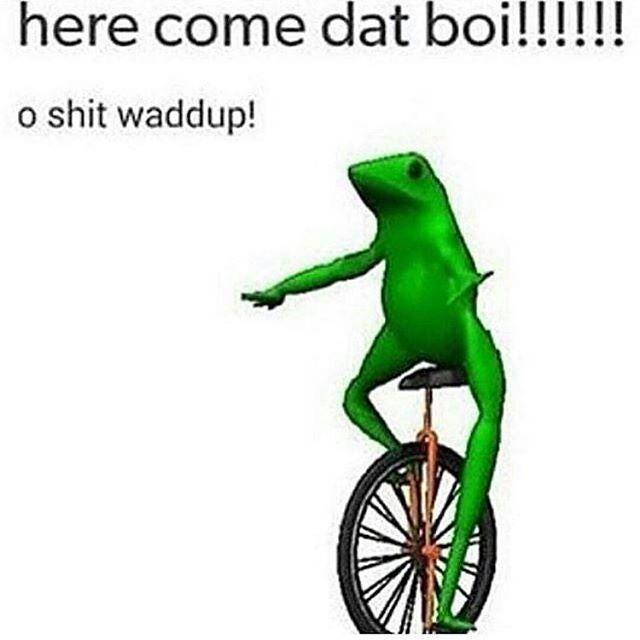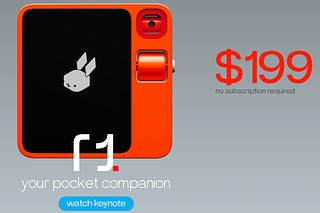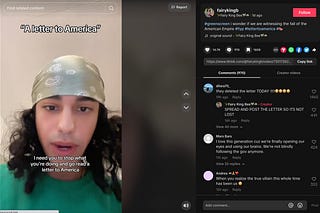

Discover more from Garbage Day

So I rarely ever share my professional work here because this is my ~safe space~. But I this week I wanted to include some excerpts I wrote for BuzzFeed News’ “The 100 Memes That Defined The 2010s”. It’s a piece I’m really honored to have been able to work on and I feel like some of the entries I wrote for it are good fit for Garbage Day readers. You should click on over though and read the full amazing list. My colleagues Katie Notopoulos and Julia Reinstein wrote some really amazing stuff.
There are eight entries in particular on the 100 Memes list that, taken together I think, come close to articulating a feeling I’ve been grappling lately with about the last decade of web culture. There’s been an undeniable shift in how we use the internet and I’ve been struggling to articulate exactly what it is that has happened and what it means for the future.
Deep-Fried Memes
You might not even know what they're called if you saw them, but a deep-fried meme is one of those pictures that has been screenshotted, edited, and reuploaded across Twitter, Instagram, and Reddit so many times that has started to degrade in quality. At first this deep-frying process was largely genuine, kids refiltering and remixing each other's images. But as the phenomenon became more known, a second wave of ironically deep-fried images started to appear. It's a fairly silly thing on its surface, but it also speaks to the innate desire for people to share stuff online. If Instagram had a share button, there's a good chance this sort of thing would have never started happening in the first place. The walled culs-de-sac of proprietary platforms will never be able to stop the world's teens from sharing a picture of Peter Griffin from Family Guy smoking a huge blunt.
Sad Keanu
Keanu Reeves kickstarted the decade as a meme after a paparazzi photo of him eating a sandwich on a park bench was shared on 4chan. “Instead of Chuck Norris, let's make Keanu Reeves a meme,” one redditor wrote as the image started to spread. Which is interesting to think about — that this particular decade, one so heavily shaped by increasingly radicalized social media platforms, began with users of heavily male communities like 4chan and Reddit deciding to abandon an aggressively masculine meme like Chuck Norris and instead embrace a picture of disheveled loneliness. Splash News, the agency behind the photo, has attempted to remove the picture from the internet via DMCA takedowns, but Reeves and his sandwich have proved too popular (and photoshoppable) to really scrub away. As for how Reeves feels about the whole thing, at the time he told the BBC, “Do I wish that I didn't get my picture taken while I was eating a sandwich on the streets of New York? Yeah.”
Dashcon
There was a time right around the middle of this last decade where the internet was a largely more innocent place. Nerdy fandom subcultures built around TV shows like My Little Pony: Friendship Is Magic, Sherlock, Doctor Who, and Supernatural weren't quite in the mainstream yet, nor did people fully understand the realities of what happens when you bring a bunch of people from the internet together in real life. That giddy naivete died with Dashcon. The unofficial Tumblr-based convention wasn't quite a Fyre Festival–level disaster, but the level of secondhand embarrassment it generated seems to have killed an entire mode of internet use. One could even argue that Tumblr — the little social network that could — lost its last bit of grip on the larger culture of the internet. From the sad photos of cosplayers sitting in a weird ball pit to the haunting photos of empty of showrooms to accusations later of fraud, for fandom internet there was a before and after Dashcon. Based on things like Tanacon and Fyre Festival, though, it seems like those who do not learn from Dashcon are doomed to repeat Dashcon.
Forever Alone
Constructing a linear narrative out of internet content is extremely complicated — things connect across time and space in ways that make a traditional retelling almost impossible. That said, if there is a story of the internet in the 2010s, I’d argue it’s about loneliness and the bizarre and surreal ways people try to overcome it. So perhaps it’s fitting that this decade started with FunnyJunk user Azuul’s May 2010 rage comic "April Fools" — the first appearance of the phrase “forever alone.” Azuul’s swollen-faced character has more or less gone extinct, but the phrase, and more importantly, the meaning behind the phrase, have gone on to define the core irony of the internet: We are deeply isolated, yet connected enough to each other to commiserate about it.
Dat Boi
In the same way that a bunch of the X-Men are all blue for some reason, the internet really likes green frogs. Sadly for Dat Boi, he hasn’t had the same staying power as Pepe or Kermit. The version of Dat Boi that we all know was first posted in April 2016. In many ways, he’s the last meme specifically from Tumblr — a nice, wholesome shitpost featuring a picture stolen from an AP physics textbook that doesn’t really make any sense but is just kind of funny. Dat Boi, in my opinion, is the platonic ideal of a meme: It’s funny, it works as a cute little wink for superusers, it doesn’t make a lot sense, and it disappears before getting turned into some dumb brand tweet.
“Do It for the Vine”
Vine shut down on my birthday, and because of that, I’ve always felt a weirdly intimate connection to Vine. A good friend once told me he thought of a Vine as one sentence in the visual grammar of video. Everything you need to convey one idea in a video you could do in a six-second Vine. It was a revolution and you could argue it has had a more profound legacy on how we create and share videos than bigger platforms like YouTube or Netflix. For a long time, I, like many people, believed that Vine was shut down too soon. Now, I think it actually shut down exactly when it should. Social networks probably shouldn’t last! It’s weird that we still use Twitter.
The phrase “do it for the Vine" comes from a song created by YouTuber Kaye Trill and it immediately became the anthem of a summer full of people doing extremely outrageous things. Many of the original great “do it for the Vine" posts have been deleted, sadly. But, luckily, we’ll always have the YouTube compilations.
The Joker
The Joker obviously existed long before social media, but the character's glee-filled take on chaotic nihilism has, for better or worse, become inseparable from how we imagine a very specific kind of kind internet user: angry, insular, often violent, male.
Over the last decade, a symbiotic relationship has evolved between new Hollywood iterations of the Joker and the internet's digital underbelly. Starting in 2008, Heath Ledger’s anarchist, anti-capitalist Joker became the unofficial mascot of 4chan’s Anonymous hacktivist movement. The idea of a nameless grungy psychopath burning piles of dirty money, throwing a city into chaos to satisfy his twisted rage, was a perfect avatar for a generation of Occupy-adjacent millennials graduating into a global economic recession and harnessing technology to claw back control of their own lives. Jared Leto’s 2016 take on the Joker, even though none of them would ever admit it, mirrored the rise of Gamergate somewhat perfectly, giving the world a sniveling misogynist covered in face tattoos, singularly focused on controlling the anatomy of Suicide Squad’s standout woman character Harley Quinn. All the clown prince was missing was a vape to better embody late millennial toxic masculinity. So it’s fitting, then, that we close out the decade with Joaquin Phoenix’s Joker, a chain-smoking, self-described mentally ill loner who hijacks mainstream media via an act of extreme violence and sets off a reactionary protest movement.
The Joker isn’t always a serious meme, like with the most recent Joker film giving us the scene of Phoenix dancing down a flight of stairs in Harlem. Instead, it’s something closer to SpongeBob, a visual and emotional language we use to express a part of ourselves online. As for whether the Joker will continue to evolve alongside social media, well, there are rumors already circulating of another Phoenix-led Joker film, so it’s likely he’s not going away anytime soon.
Pepe The Frog
None of us wanted to write about Pepe. What’s even left to be said about him that hasn’t been said already? He started as a chill frog in a 2008 comic by artist Matt Furie. He then became a consistent, but largely forgettable fixture of 4chan in the early part of the decade. The first time I saw him was in a meme that read, "We are the middle children of history. Born too late to explore Earth, born too early to explore space." I thought it was pretty funny. Sometimes he’d be in memes about blasting the toilet bowl with piss to clean it. He’s something different now — a literal hate symbol that is still being used by far-right extremists and white nationalists.
In the course of his transition from slacker goof to hate symbol, he’s taught us a lot about symbols — not just how the internet works — but he’s also maybe revealed something deeper about how symbols work. Furie has famously tried to litigate Pepe away from fascists, but it hasn't really worked. Pepe’s effectively theirs now. It’s a grim, but important reminder that all culture can be hacked and warped and poisoned. All speech, online and off, is political. And all symbols, even chill frogs, require protection and upkeep. Feels bad, man.
Anyways, Lots To Think About, Here’s A Palette Cleanser To End On





P.S. here’s one more really good meme.
***All typos in this letter are on purpose actually***
Subscribe to Garbage Day
A newsletter about having fun online.









